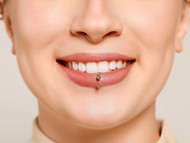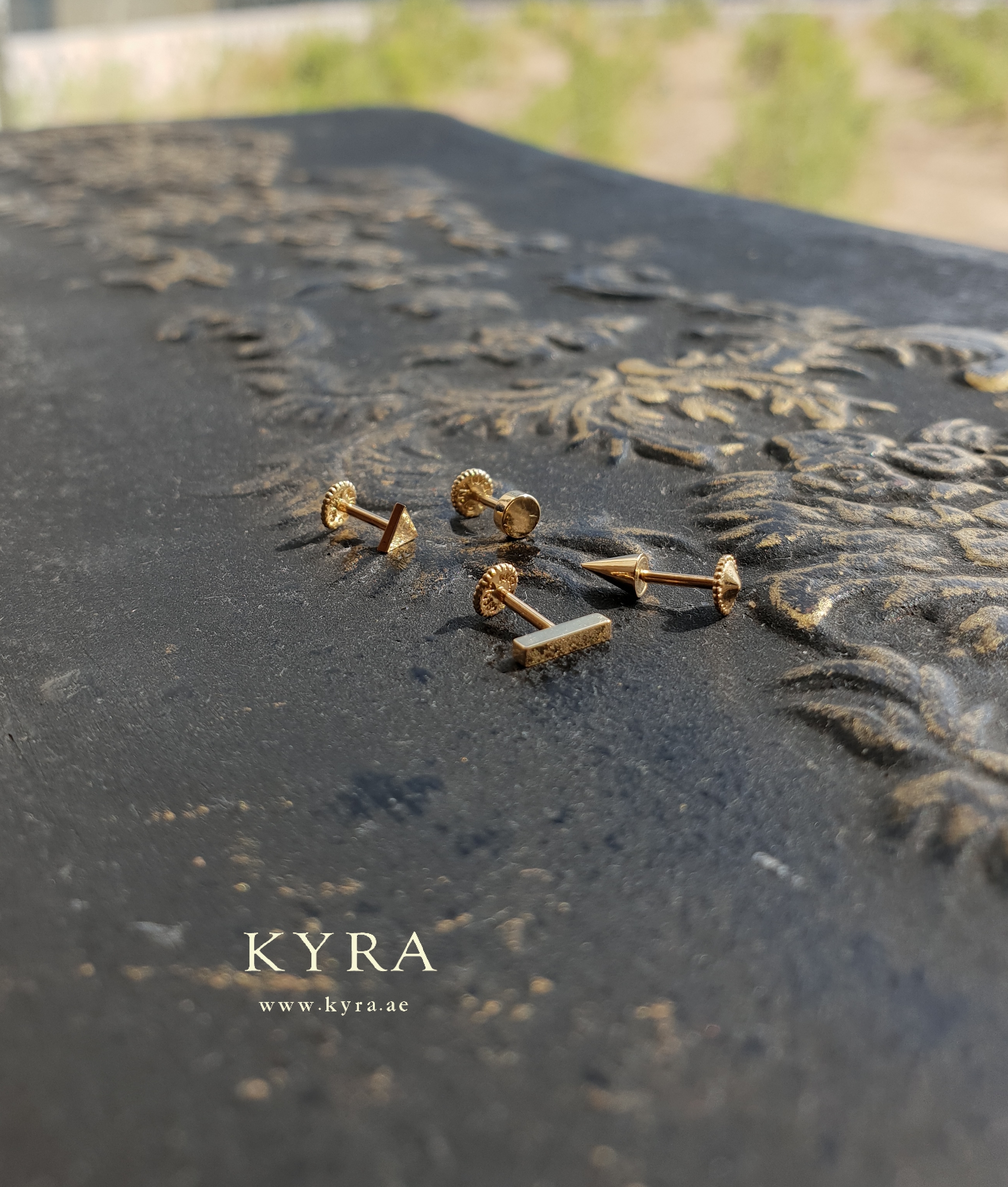The Healing Process: What to Expect Week-by-Week After Getting Pierced ?
Posted by KYRA on 9th Apr 2025

The Healing Process: What to Expect Week-by-Week After Getting Pierced
Getting a new piercing at KYRA is an exciting form of self-expression, but understanding the healing journey is crucial for proper care and realistic expectations. This comprehensive week-by-week guide will walk you through what to expect during the healing process for various types of piercings, helping you navigate the journey with confidence.
Before We Begin: Healing Timeframes Vary
It's important to understand that healing times differ significantly depending on:
- Piercing location: Earlobes heal much faster than cartilage piercings
- Your body: Individual healing rates vary based on health, age, and immune function
- Aftercare routine: Proper care significantly impacts healing time and success
- Jewelry quality: High-quality, appropriate initial jewelry with the right gauge promotes better healing
The First 48 Hours: The Critical Period
The first two days after getting pierced are crucial for establishing proper healing.
What to expect:
- Significant redness around the piercing site
- Warmth when touched
- Moderate swelling
- Tenderness or throbbing pain
- Possible minor bleeding
What to do:
- Keep the area clean and dry
- Avoid touching the piercing with unwashed hands
- Apply cold compresses to reduce swelling (not directly on the jewelry)
- Take over-the-counter pain relievers if recommended by your piercer
- Sleep carefully to avoid pressure on the new piercing
Week 1: The Initial Healing Phase
During the first week, your body begins the healing process in earnest.
What to expect:
- Continued swelling, though gradually decreasing
- Formation of lymph fluid (a clear or slightly yellow discharge)
- Crusting around the jewelry
- Persistent tenderness
- Itchiness as healing begins
What to do:
- Clean twice daily with sterile saline solution available at both KYRA locations .
- Remove crusts gently during cleaning
- Avoid rotating or moving the jewelry
- Continue to avoid swimming, hot tubs, and baths
- Wear loose clothing that doesn't put pressure on the piercing
Weeks 2-3: The Stabilization Period
This is when your piercing starts to feel more stable, though it's not healed yet.
What to expect:
- Reduced swelling
- Less tenderness when touched
- Continued lymph production, but typically less than week 1
- Formation of healing tissue around the piercing channel
- Possible development of small bumps (normal tissue response)
What to do:
- Maintain consistent cleaning routine
- Avoid changing jewelry — it's still much too early
- Be careful with hair products, makeup, and skincare near the piercing
- Continue to sleep carefully to avoid pressure
- Watch for signs of irritation and adjust your aftercare as needed
Weeks 4-6: The Deceptive Phase
This period can be tricky because your piercing might look and feel healed on the outside, but the internal healing is far from complete.
What to expect:
- Minimal to no visible swelling
- Significantly reduced tenderness
- Less crusting and discharge
- The piercing appears more settled
What to do:
- Don't be fooled by appearances — continue proper aftercare
- Resist changing jewelry unless done by a professional piercer
- Protect from physical activity that might traumatize the piercing
- Begin to reduce cleaning to 1-2 times daily (for faster-healing piercings)
- Be vigilant about hygiene as complacency can lead to problems
Weeks 7-12: The Middle Healing Phase
During this period, different piercings progress at notably different rates.
For earlobe piercings:
- May be nearly healed by the end of this period
- Minimal sensitivity
- Professional jewelry change possible (though waiting longer is ideal)
For cartilage and most body piercings:
- Still in active healing
- Some sensitivity may persist
- Continue full aftercare routine
What to do:
- Maintain cleaning routine appropriate for your piercing type
- Protect from trauma during physical activities
- Consider a professional check-up to assess healing progress
- Don't rush the process — patience leads to better long-term results
Months 3-6: The Maturation Period
This period sees significant progress for most piercing types.
What to expect:
- Earlobe piercings should be fully healed
- Navel, nostril, and lip piercings approaching complete healing
- Cartilage piercings (helix, industrial, tragus) still healing but more stable
- Formation of stronger tissue around the piercing channel
What to do:
- Consult with your piercer before changing jewelry in healed piercings
- Continue appropriate aftercare for still-healing piercings
- Choose quality jewelry for any changes
- Be aware that complete healing is still ongoing for many piercing types
Months 6-12: The Final Healing Phase
The home stretch for most piercing types.
What to expect:
- Most standard piercings (except certain cartilage) should be fully healed
- Minimal to no sensitivity during daily activities
- Stable piercing channel
For cartilage and certain body piercings:
- May still be completing the healing process
- Occasional sensitivity possible
- Final strengthening of the piercing channel
What to do:
- Maintain general hygiene
- Consider professional jewelry changes from KYRA for optimal fit and comfort
- Continue gentle care for piercings still in the healing process
Beyond One Year: Long-term Care
Even fully healed piercings require ongoing attention.
What to do long-term:
- Clean jewelry regularly to prevent buildup
- Choose quality materials (implant-grade titanium, solid gold )
- Remove jewelry during high-impact activities if needed
- Visit your piercer for any concerns or jewelry changes you're unsure about
- Listen to your body — healed piercings can become irritated from time to time
Common Healing Complications and When to Seek Help
While healing variations are normal, certain signs warrant professional attention:
Seek help if you notice:
- Severe swelling that worsens after the first few days
- Hot, spreading redness around the piercing
- Green or yellow thick discharge (pus)
- Fever or chills
- Severe pain that increases rather than decreases
- Embedding of the jewelry into the skin
- Persistent bumps that don't respond to proper aftercare
Final Thoughts
Remember that your piercing journey is unique. Some people heal faster than others, and different piercing types have inherently different healing timeframes. The key to successful healing is patience, consistent aftercare, and quality jewelry.
At KYRA, we're committed to supporting you throughout your entire piercing journey. From initial piercing to jewelry upgrades once you're fully healed, our professional team is here to ensure your experience is positive and your results are beautiful.
Have questions about your healing piercing? Don't hesitate to contact us for personalized advice tailored to your specific situation.



